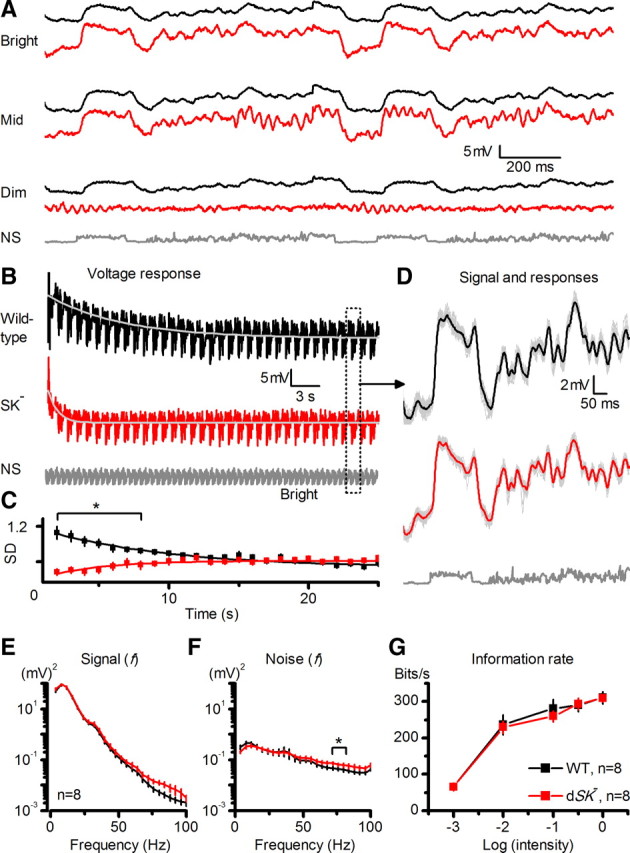Figure 8.

dSK− photoreceptors show fast but inefficient adaptation to dark-light transitions, yet their rate of information transfer appears normal. A, Voltage responses of dSK− photoreceptors oscillate sporadically during NS at dim and middle luminances, but rarely at bright luminances. B, Responses of R1–R6 photoreceptors to a repeated bright naturalistic stimulation. Mean dSK− photoreceptor output adapted to a steady-state level significantly faster than WT (τSK = 1.2 ± 0.2 s; τWT = 6.2 ± 1.8 s; mean ± SEM; p < 0.017, n = 10 cells). Dotted window, Repeated 1 s patterns. C, Dynamic range (SD) of dSK− photoreceptor output was significantly reduced at the dark-light transition (p < 0.024, t test), but recovered (sensitized) to the WT level in ∼12 s (τSK = 6.3 ± 2.8 s). In contrast, WT photoreceptor output contracted (desensitized) and slower (τWT = 15.4 ± 4.6 s; mean ± SD, n = 6). D, The signals (mean responses; black and red) and individual voltage responses (gray) of 8 photoreceptors after steady-state adaptation (first 20 responses omitted). E, Signal power spectra: dSK− photoreceptors generate larger responses to fast light changes (70–100 Hz) than WT (mean ± SEM). F, Noise power spectra: dSK− photoreceptors are noisier at high frequencies (mean ± SEM); i.e., at 72 ± 4 Hz (p = 0.024). G, Information transfer rate estimates: dSK− photoreceptor output shows encoding capacities similar to those of WT at all tested luminances (mean ± SD).
